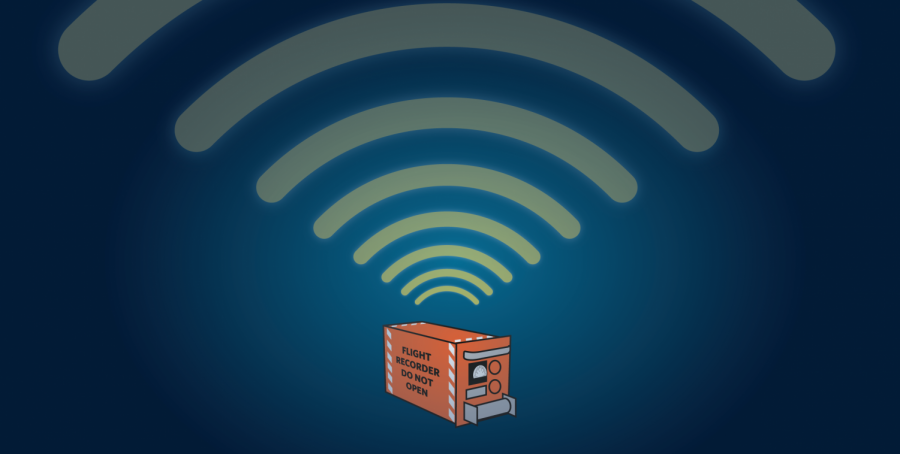Re-examining black box technology
April 21, 2014
In the wake of the missing Malaysia Airlines Flight 370, experts are reviving a question that has baffled aviation engineers for years: If black boxes are indestructible, why aren’t planes made from the same material?
Black boxes—which are actually painted orange—are made of titanium. Constructing planes with the same material would be both expensive and heavy, according to the Aviation Knowledge website.
The boxes are in fact two different devices: the Flight Data Recorder, an electronic recording device that records all of the flight control and engine parameters, and the Cockpit Voice Recorder, which records all conversations in the cockpit—including information exchange with air traffic control—according to Fred Schieszer, aviation professor at the University of Central Missouri. Commercial aircrafts are required to use these devices, Schieszer said.
Anthony Brickhouse, a professor of aerospace and occupational safety and applied aviation sciences at Daytona Beach College of Aviation, said black boxes are essential in locating missing airplanes, but their technology has proved to be in need of upgrades.
“One of the main reasons we use black boxes is to get an electronic representation of information regarding a flight,” Brickhouse said. “Both of those devices have the ability to give you a tremendous amount of information that can be used to help an investigation.”
Black boxes were first used in the ‘50s and ‘60s, and before that, most plane crashes were left completely unexplained. Now, with flight data recorders, details about a flight’s crash—ranging from instrument settings to whether the plane was on autopilot—can be used to help infer what happened to the aircraft, Brickhouse said.
“Before the cockpit voice recorders were mandatory, a plane would crash and the flight crew would die,” Brickhouse said. “Unless they were actually talking to air traffic control at the moment the accident happened, you wouldn’t get anything from the flight.”
With cockpit voice recorders, communications between pilots and air traffic control can be assessed, and those listening to the recordings can detect inflections in the voice that would suggest a sense of stress or excitement, according to Brickhouse.
If a plane crashes into a large body of water, the black box sets off an underwater locator—the pinger—which emits a signal detectable from approximately 13,000 feet below sea level for approximately 30 days, Brickhouse said.
In the aftermath of Flight 370, there has been a call for different black box technology to make locating crash sites easier.
One suggestion is that real-time flight data recorders and cockpit voice recorders be made to transmit the information being collected via radio or satellite transmission as opposed to just recording conversations, said Terrence Kelly, a professor at Parks College of Engineering, Aviation and Technology at St. Louis University.
“Of course we need to protect that data, and we need to make sure that [the] data will not be compromised,” Kelly said.
However, safety is not the only problem with real-time technology.
“It would be very expensive [to implement] and also the bandwidth that would be required to exchange that information would be really hard to set up on a worldwide scale,” Brickhouse said.
Schieszer said live video in the cockpit is also a possible improvement, but he added that he was unsure of how helpful that would be in the long run.
“There’s something to be said for too much oversight by big brother in the cockpit,” Schieszer said.
It is not a matter of having the technology to build better black boxes; it is a matter of ensuring sufficient security and funds, Kelly said.
“Black boxes have come a long way and there’s probably a lot more they can do,” Schieszer said.








